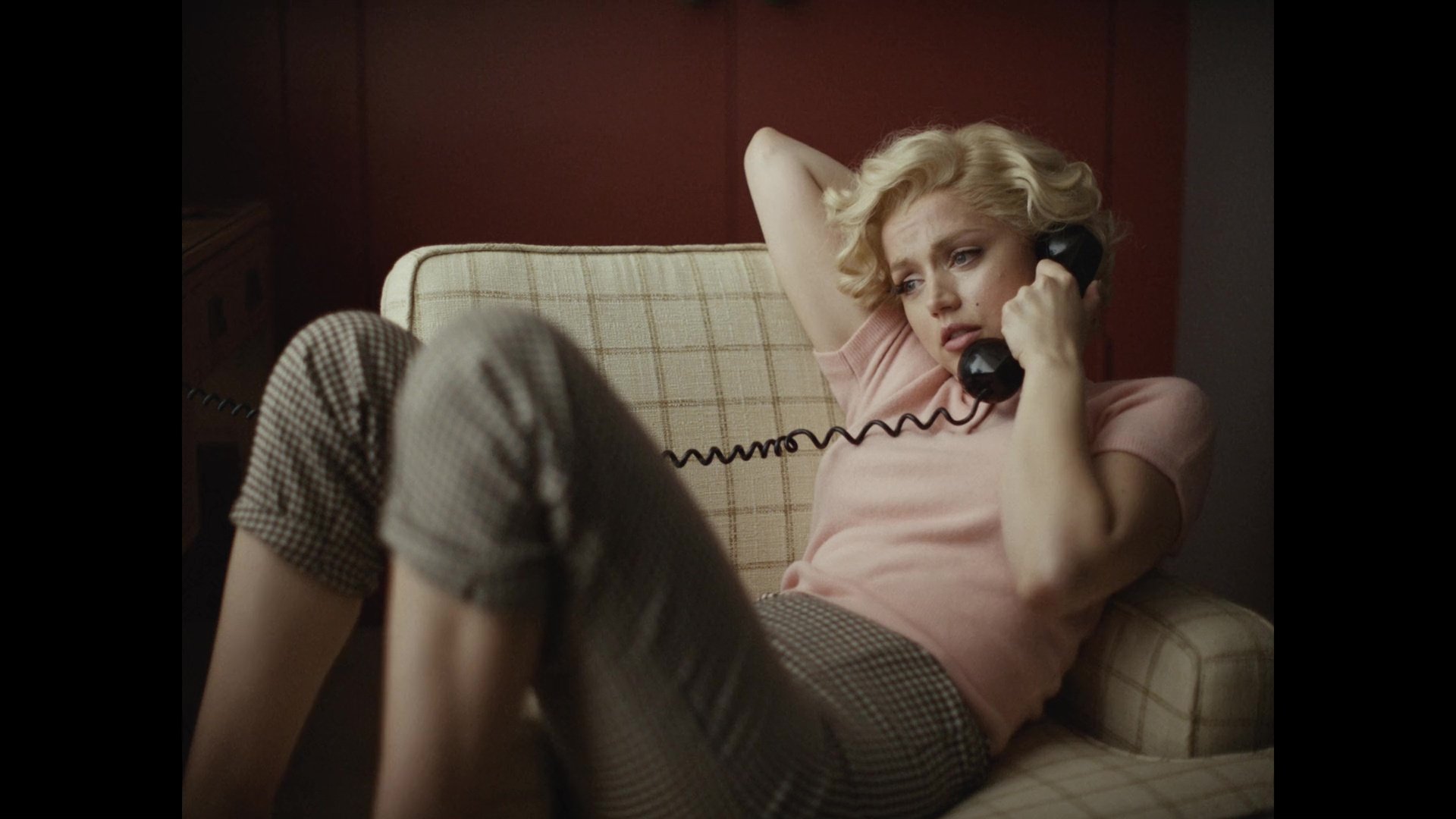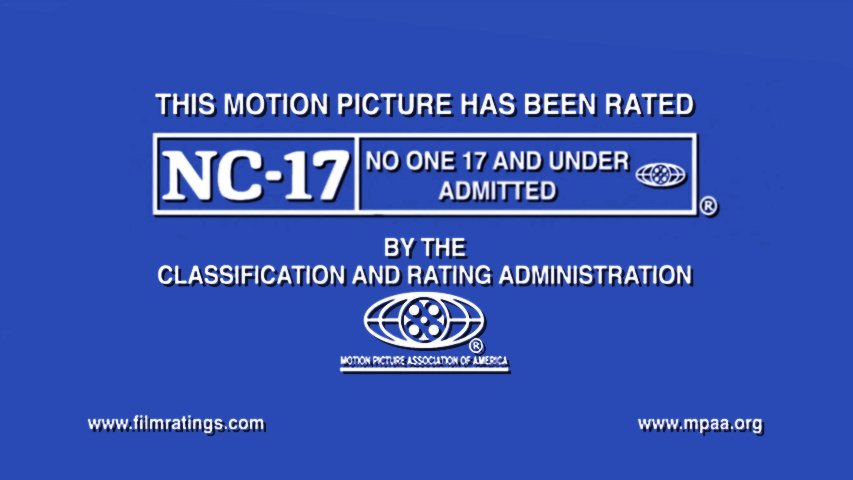2022 ‧ Drama ‧ 166m
Andrew Dominick’s Blonde is now out in select cinemas and on Netflix. The film has already generated some buzz, but the film’s MPA rating has stolen much of the attention. The film was given an NC-17. More about that particular rating later, but first a review.
Starring Ana de Armas, Blonde is not a traditional biopic but more a meditation on the myth of Marilyn Monroe. This is in keeping with the Joyce Carol Oates novel it is based on. Both in theme and structure, Blonde shares some cinematic DNA with Todd Hayne’s Bob Dylan “biopic” I’m Not There and David Lynch’s Twin Peaks: Fire Walk with Me. Instead of focusing on facts and history, it focuses on the deeper emotions and trauma Norma Jeane Mortenson had to go through to be Marilyn Monroe. The relationship with her mother is a constant through line, as is her absent father. Much of the film focuses on her relationships with men and how she tries to fill the void her parents gave her. We see her marriages to Joe DiMaggio (Bobby Cannavale) and Arthur Miller (Adrien Brody), as well as a scene with President Kennedy (Caspar Phillipson). As one may expect the rating, the film does have a fair amount of nudity though it is not explicit. Dominick uses it to show how destructive the male gaze can be on a woman. The film examines and ruminates on what it must feel like to be exploited by men, Hollywood, and the world. That is perhaps best distilled about half-way through the film when Marilyn, says “I’m not a star. I'm just some blonde.”
Told in lyrical sequences, like a Hollywood daydream, Dominick succeeds in having the viewer empathize with Marilyn/Norma Jeane. This is all enhanced by Nick Cave and Warren Ellis’s excellent score and Dominick’s frenetic uses of color, black & white, and aspect ratios. Ana de Armas gives the best performance of her career and probably one of the year’s best as well. The film probably does not need to be as long as it is and there are some perplexing filmmaking choices, but it is worth watching at least for de Armas’s performance if nothing else. It is a rare Hollywood art film. It isn’t an easy watch, but most NC-17 films aren’t.
Grade B
When I first learned that Blonde had been rated NC-17 and Netflix was not going to fight it, I decided to do a deep dive into the MPAs most restrictive rating. Typically seen as a harbinger of box-office doom, it is seen as a rarity. Many films actually receive it every year, but it is rare for the film to keep the rating. Studios and directors will usually edit a film down to an R. In some cases, the rating gets appealed to an R without any changes or the rating is surrendered and the film is released unrated. Sex, nudity, and aberrant behavior containing the two are the more infamous reasons a film gets an NC-17. Though it seems a number of violent horror films get the rating and then edit down every year. There’s a lot about this process that in many ways seems to favor large studio films over independent ones. Personally, I think the way the MPA goes about ratings is not ideal, but that’s not what I want to focus on. Kirby Dick’s This Film is Not Yet Rated goes into all that in depth and highlights the hypocrisy quite well.
The stigma around the rating isn’t entirely the MPA’s fault. Much of it is held over from the X rating. Originally an X meant that the film featured adult context that may be too mature for younger audiences. When the rating symbol was created in the late 1960s the MPA didn’t trademark it. Due to that lack of trademark, the fledgling pornographic film industry the early 70s would often self-rate their films with an X. It became a marketable letter for a certain kind of film and thus became synonymous with that.
So, the X rating was stigmatized, and studios wanted a different rating, so in 1990 NC-17 was introduced to fix that issue. It failed. Again, not entirely because of the MPA. Most newspapers and television stations would not run ads for such films and most multiplex cinemas would not show them. Blockbuster video and other rental chains would not carry copies when they arrived on home video. Abel Ferrara’s Bad Lieutenant was edited down to an R for those rental chains. Ironically, about a decade later, these chains would however carry “Unrated” cuts of films that were edited down for the cinemas. It was like the rating itself, less the content, was the issue.
With Blonde it is easy to wonder if this decision by Netflix to keep the rating may actually be a bit of a marketing ploy. The streamer is both a film and television studio, so it could have easily released Blonde as a television film with a TV-MA rating. The fact that a more-or-less equivalent television rating is less stigmatized than a film rating could have its own article. Perhaps for Netflix a near 3-hour arty pseudo-biopic is hard to market. Keeping the rating adds to the buzz.
It is somewhat surprising that with the rise of streaming there was not an effort to rebrand the rating. Showgirls, an infamous NC-17 bomb, had a whole new life once it hit home video. Audiences may not be willing to buy the ticket in a public space, but they are often willing to watch in a private space. Which is exactly what streamers have to offer. It could also bring in a demographic that is actually quite large: adults wanting to watch adult oriented films. Not necessarily explicit sex and violence, but films that cater to adult themes. No offense to the teenage audience, but not everything has to be for them. Perhaps adults would get more interested in cinema again. It would open up an avenue that streamers have avoided. They could get more creative and feature more original films without the concern of the MPA. John Waters in This Filthy World challenges indie filmmakers to try and find a way to get an NC-17 without any sex or violence. Imagine the water-cooler factor of that. Free idea: a horror film called Sunday Scaries about the very adult problem of working in late-stage capitalism. No sex, drugs, or violence. Just dread and anxiety for 90 minutes.
With Blonde easily streaming at home, now is a great time to explore the “genre” of NC-17 films. Bad Lieutenant is quite good. Showgirls is essential, being the only wide-released NC-17 film, but its cult following is not due to quality. For a campy NC-17 experience, I would instead go with John Waters’ A Dirty Shame. Not his best, but at least it is funny on purpose. Many of the 1990s titles are, as expected, of their time. Another essential title, Henry & June, the first to get the rating, has a stuffiness that can also be found in Wide Sargasso Sea and Bent. Blonde has a different kind of stuffiness, more of an arthouse variety. Man Bites Dog has less of that, and is quite disturbing. David Cronenberg’s Crash might be even more disturbing with is auto, as in car, eroticism. It makes sense in the film. Say what you will about Canada’s Great Dave. His images might be gratuitous at times, but sex always moves the plot forward in his films and Crash is a great example.
The 21st century would give us Blue is the Warmest Color and The Dreamers. The former is one of the better NC-17 films, but the behind-the-scenes context taints its legacy. In a rare move, the Cannes committee that year award the Palme d’Or to the director and the two leads. The two leads deserve it more. Bertolucci’s The Dreamers has a similar stuffiness as Last Tango in Paris, but is kind of a film lover’s movie. Blonde shares that film lover’s sentiment too. Steve McQueen’s Shame, is a fascinating look at addiction that might pair well with Dominick’s Monroe meditation. Ang Lee’s Lust, Caution and Pedro Almodovar’s Bad Education are probably the best films to receive the rating. Both are excellent dramas worth your time. Lee’s film is the highest-grossing NC-17 film. Time will see how Blonde will settle among these titles. I am unsure if it really goes into NC-17 territory, there are teen sex comedies that got away with more, but Blonde does share a kind of intensity that Bad Lieutenant, Crash, and Man Bites Dog have. It is not as explicit as those films, but it gets under your skin just as deep. Perhaps the rating has more baggage than it deserves. I can say that every film I’ve seen with an NC-17, is far from ordinary.
~Andrew


























